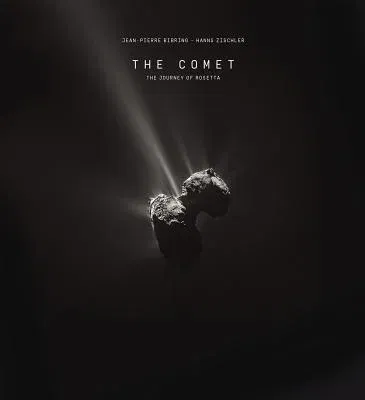A gorgeously printed portrait of a comet
In 2004, following more than ten years of research, the European Space
Agency decided to send the Rosetta probe to study the 67P comet
Churyumov Gerasimenko, nicknamed "Tchoury." After a ten-year voyage and
hundreds of millions of miles crossed through space, the probe entered
the comet's orbit and stayed there for 18 months--a first in the history
of space conquest. Its lander, Philae, a kind of miniature science
laboratory, landed directly on Tchoury's surface to sample matter for
analysis. The mission: to find some answers to the questions of the
origins of the solar system and the emergence of life on Earth.
Among the important data collected by the Rosetta probe were scores of
incredible new photographs of the comet--presented here in an
extraordinary book, a sequel of sorts to 2013's This Is Mars. The
Comet is structured around the various phases of the probe's journey:
leaving Earth, breaching its atmosphere and watching its lights
disappear; skirting the Moon and coming close to Mars; and finally
losing itself in the starry void of the cosmos and approaching the
comet.
Thanks to highly developed optical technology, each of these encounters
yielded captivating images of the various planets in incredibly high
definition; their textures and surfaces appear on the paper in vivid
detail. In addition to the staggering collection of images, The Comet
includes a text by Jean-Pierre Bilbring, an astrophysicist involved with
the Rosetta project, reflecting on the objectives of this mission and
the accomplishment of such a technological feat for humanity. The result
of an interstellar voyage, this book is a photographic dream that
transports the reader into space aboard the Rosetta probe.

